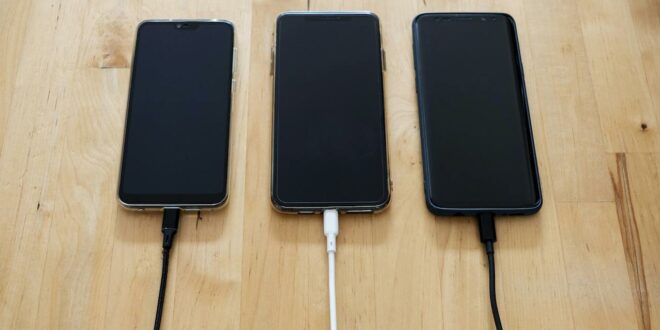Stepping out of bed onto a sea of tangled cords, a plethora of plugs, and a field of phone chargers, is no way to start the day. Nor is it much fun hunting through a ball of USB cables for the only one compatible with your bluetooth speaker. Or trying to figure out (in the middle of a looming power cut) which of your 5 flashlights is in working order. Climbing over outdated screens and desktop computers to reach your printer isn’t exactly a walk in the park, either (not to mention the fight to get the printer to work when you do find it).
Let’s face it, unless you’re one of the enlightened folks, your home is likely to be overrun with electronics and electrics to the point where it simply drives you to distraction. And it doesn’t have to be this way. With the handy tips below, an hour or two may be all it takes to untangle your way into a stress-free relationship with your devices and their accoutrement.
Knowledge is power
To be fair, a lot of electronic clutter is down to the fact the digital world changes so rapidly we don’t know which of our (potentially) outdated devices is still worth keeping. If you’re not sure your devices (whether they’re wireless headphones/earpods/MP3 players/wrist-watch health monitors/electronic readers/digital photo frames or weather stations etc etc) are still useful to anyone, bundle them all into a bag and head to your local electronics shop at a time when its least likely to be busy. A kind assistant will be able to tell you, within seconds, which items are still gift- or donatable, and which can go to the recycling centre. Do the same with all those old mobiles – but take them to a mobile phone shop for advice.
Do the drop-off
No-one likes waste, and when it comes to electronics, it can always be avoided. For devices still useable, Google donation points such as Wellington Children’s Hospital (for mobile phones), R & D (for repurposing electronic devices), or TechCollect for general e-waste (electronic waste). If you don’t have a local collection point, check out options and regulations for posting or couriering.
Count down
USB cables are great – but only if you don’t have too many of them. As a general rule, aim to have just one cord for each device (the longer the better in some cases), and clip or tape an identifying label to each so you know which device it belongs to. Where safe to do so, use multi USB cables to reduce the number of cords you require (read the instructions on your device packaging or ask your supplier for advice on this). Do the same with chargers (always checking instructions to see if it’s safe to do so). When cords are not in use, store them in holders. Keep plugs in the sockets of multi-plug boards which are firmly anchored to the wall or a desk where you won’t trip over them.
Do you really need it?
There was a time when every home required a printer. But now, with e-mail at your fingertips, printing is seldom required. If you do need to print a document, there are print centres in almost every town where you can print directly from your mobile phone or portable device for just a few cents a sheet. Save yourself space and hassle by ditching the (often pesky) home printer, altogether.
Every home should have one!
We all do it – take batteries out of devices that don’t seem to be operating, and leave them in the drawer with the fresh ones. Which is why a working flashlight is never at our fingertips when we need it most, and why we never know if a fault or flat batteries is the reason a device won’t go. That’s why every home should have a battery tester. These pocket-sized appliances cost just a few dollars, and can reduce the clutter in your home dramatically. If the batteries are flat – they go to the recycling centre, or onto the charger. If the device is at fault, either take it in for repair or recycle it, and get a new one (pronto if it’s a flashlight!).
Start reducing stress and clutter by thoughtfully quitting your excess electronics and electrics, today. As the cost of these items continues to reduce, you can always purchase anew if you need to.









Join the Discussion
Type out your comment here:
You must be logged in to post a comment.